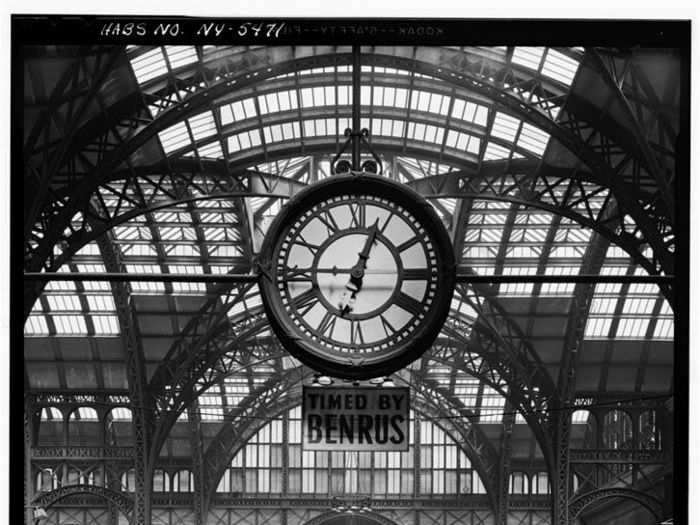
This version of Penn Station now only lives in the archives.
When it was built in 1910, Penn was a majestic transit hub and was the fourth largest building in the world. It was later destroyed in the '60s, rebuilt as a bleak subterranean station, and is now one of America's most vile train stations.
But Penn will soon get a much-need makeover that will apparently be as remarkable as its predecessor.

This mostly underground station spans nine and half blocks of Chicago.
Its Great Hall is absolutely stunning, and features Roman columns, a 115-foot atrium, and a giant curved skylight.

Serving commuters since 1901, this red brick train station was inspired by French Renaissance architecture. Its large cast iron train shed, its domed clock tower, and tiled roof was emblematic of the station's French architectural style, of which relatively few examples remain in the US.
It was a bustling transit hub until it closed in 1975 due to the national decline of American train travel. It later re-opened in 2003 after a series of renovations.

As early as the mid-1880s, Denver saw a tremendous spike in train travel during a time of westward expansion.
The city's Union Station survived a giant fire, a few floods, and America's shift toward air travel as plane tickets became cheaper beginning in the '60s.
The Station's most impressive architectural feature is its al fresco platform with a curved ceiling. In the past few years, the city has been slowly upgrading the station, with added pedestrian walkways and a bridge that will connect the station with the nearby mall and park.

This glamorous train station almost wasn't built. In 1926, Los Angeles voters had the choice between the construction of a network of elevated railways or a much smaller Union Station.
The election took on a racial tone that reflected prejudice against the wave of Chinese immigrants, since the station would be in the heart of LA's original Chinatown. A majority chose Union Station, however, and it was completed in 1939.
Today, Union Station is the largest train terminal on the West Coast, with nearly 110,000 people passing through it each day. Some of its highlights include mosaic floors and gold chandeliers that hang from wooden beams.
The transit hub plans to finish upgrades by December 2016, including a faster rail, more shops and restaurants, and parking for bikers.

When the Cincinnati Union Terminal was completed in 1933, it was the largest rotunda in the Western Hemisphere.
The Art Deco-style station features a glass entrance and a fountain out front. Inside, four artists collaborated on massive murals that chronicle stories in American history. The German-American painter Winold Reiss produced 23 glass-tile mosaic panels that live on as impressive displays of public art.

Completed in 1913, the New York City station features elaborate moldings and beautiful marble. When commuters look up, they see a spectacular 25,000-square-foot mural of constellations with gold-leaf stars. At its center, there's the iconic gilded clock.
When it was built, Grand Central represented innovation in transit hub design, with features like an incorporation of luggage-friendly ramps instead than stairs.
 A couple accidentally shipped their cat in an Amazon return package. It arrived safely 6 days later, hundreds of miles away.
A couple accidentally shipped their cat in an Amazon return package. It arrived safely 6 days later, hundreds of miles away. A centenarian who starts her day with gentle exercise and loves walks shares 5 longevity tips, including staying single
A centenarian who starts her day with gentle exercise and loves walks shares 5 longevity tips, including staying single  2 states where home prices are falling because there are too many houses and not enough buyers
2 states where home prices are falling because there are too many houses and not enough buyers "To sit and talk in the box...!" Kohli's message to critics as RCB wrecks GT in IPL Match 45
"To sit and talk in the box...!" Kohli's message to critics as RCB wrecks GT in IPL Match 45
 7 Nutritious and flavourful tiffin ideas to pack for school
7 Nutritious and flavourful tiffin ideas to pack for school
 India's e-commerce market set to skyrocket as the country's digital economy surges to USD 1 Trillion by 2030
India's e-commerce market set to skyrocket as the country's digital economy surges to USD 1 Trillion by 2030

Copyright © 2024. Times Internet Limited. All rights reserved.For reprint rights. Times Syndication Service.